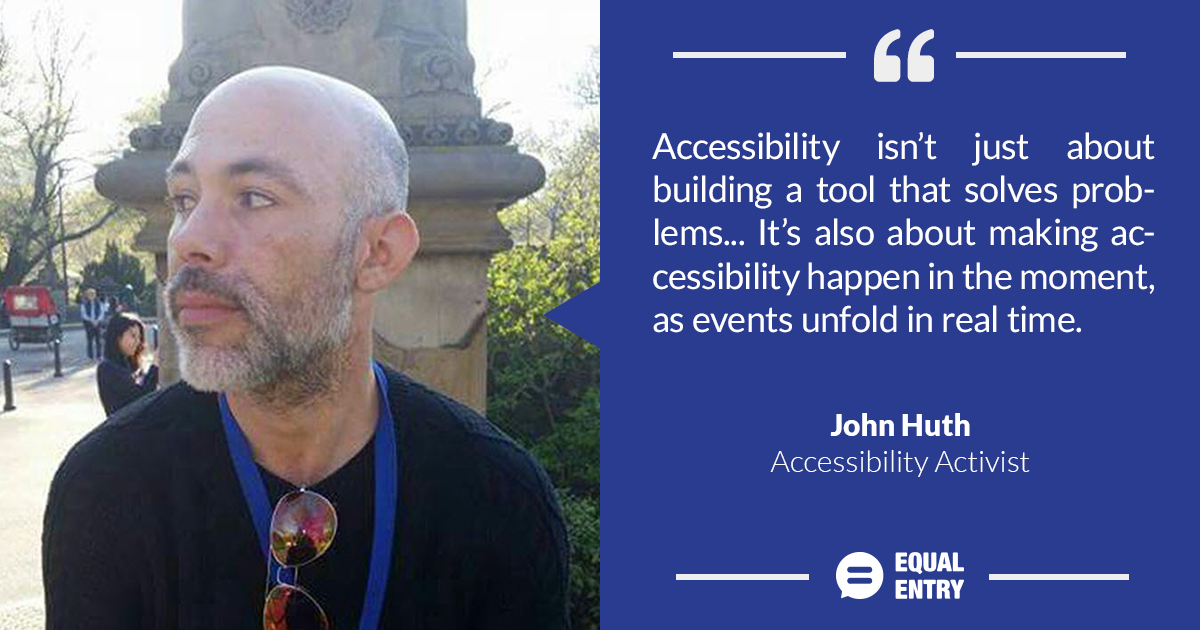Summary

This month’s installment of our Accessibility Activists column is an interview with John Huth, Young Adult Librarian for The Child’s Place in Brooklyn. He collaborates with partners, including schools and community-based organizations, to provide high quality information services to underserved young people, including those with disabilities.
When did you first get started in accessibility?
In 1998, I started working as a one-to-one paraprofessional for the New York City Department of Education. The student I worked with required accommodations which did not exist at the time. At this point I became actively interested in exploring creative solutions to accessibility issues.
What project are you most proud of?
My last. Yesterday I lead students at Clara Barton High School in an activity where we used an opaque plastic screen, cut up scraps of paper and a lamp to create shadow art. This was a low tech on the fly activity. Yet every student was able to create in a way that was meaningful to them. Accessibility isn’t just about building a tool that solves problems although that is important. It’s also about making accessibility happen in the moment, as events unfold in real time. That is what I am most proud of.
What is your current area of focus in the accessibility field?
Video Gaming, specifically in the areas of interface (controller/system) and user experience. I run an accessible arcade at Brooklyn Public Library which affords me the opportunity to observe how students use accessible gaming technology. Everything I know, I learned from watching them.
What accessibility barrier would you like technology to solve?
We have all the technology we need to afford people with disabilities equal access. A better question might be how do we eliminate financial barriers to accessible technology?
Watch Huth’s presentation for a11ynyc on accessible gaming for teens and young adults with disabilities: